| Kawasaki Heavy Industries & CRRC Sifang C151B | |
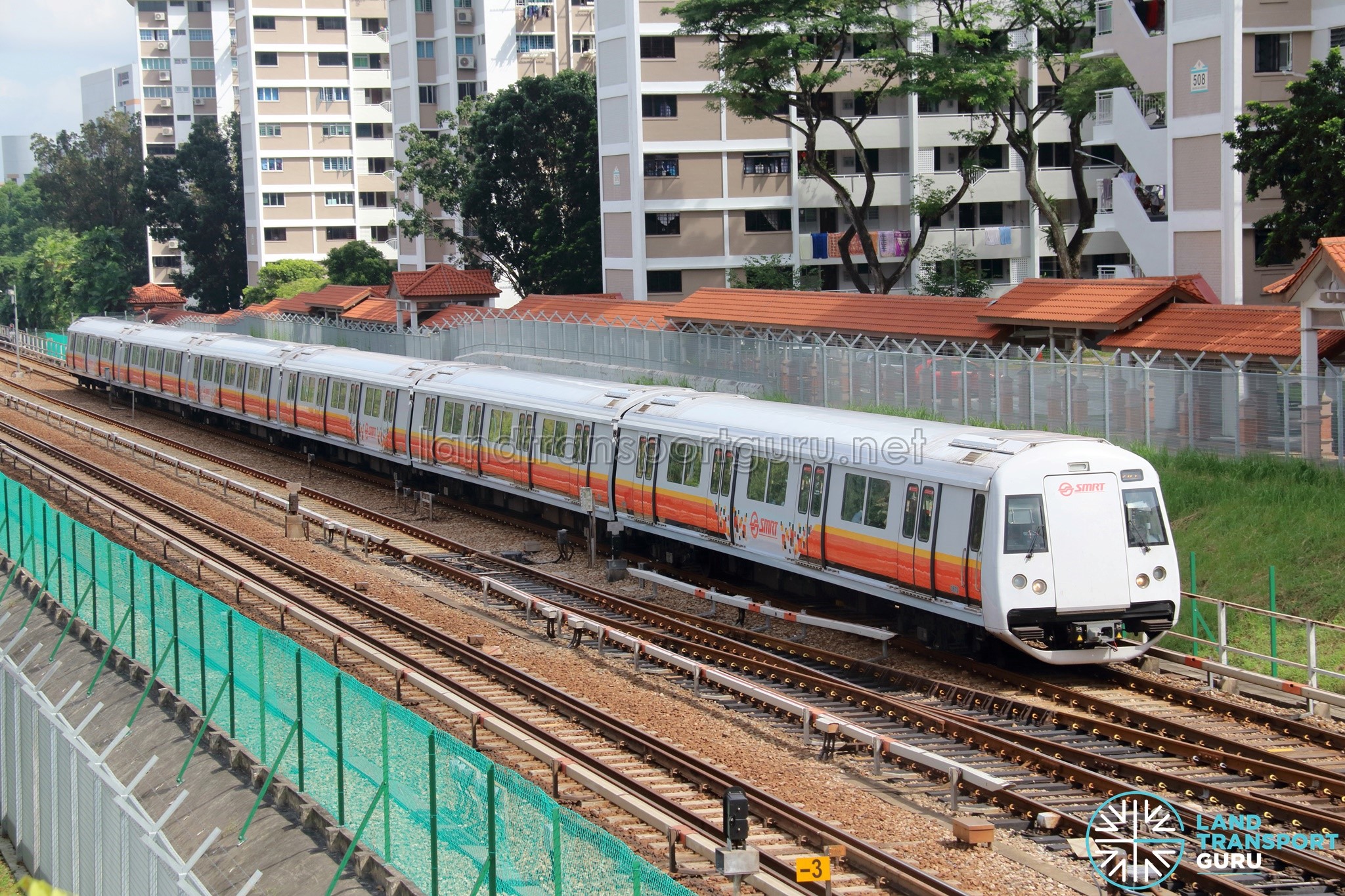 |
|
| In service | Apr 2017 — |
| Manufacturer | Kawasaki Heavy Industries with CRRC Sifang |
| Constructed | 2014 – 2017 |
| Number built | 270 Vehicles (45 trainsets) |
| Formation | 6 cars per trainset DT–M1–M2–M2–M1–DT |
| Fleet number | 601/602 – 689/690 |
| Operators | SMRT Trains |
| Depot(s) | Bishan Changi Ulu Pandan Tuas |
| Line(s) served | North South Line East West Line |
| Technical Data | |
| Car body | Aluminium-alloy |
| Doors | 8 per car |
| Signalling | Thales SelTrac CBTC |
| Electrification | 750 V DC Third rail |
| Track gauge | Standard Gauge (1435mm) |
The Kawasaki Heavy Industries & CRRC Qingdao Sifang C151B is an electric multiple unit (EMU) train operating on the North South Line (NSL) and East West Line (EWL). These were the fifth generation of rolling stock, purchased ahead of the opening of the EWL’s Tuas West Extension in 2017, and also intended for additional capacity on both lines.
Forty-five trainsets comprising six cars each were procured, manufactured from 2014 to 2017 by Kawasaki Heavy Industries and CRRC Sifang in Qingdao, China.
Trainset 601/602 commenced revenue service on Sunday, 16 April 2017, running on the North-South Line.
Background
Contract 151B (C151B) for the supply of 45 trainsets for the North South and East West Lines was initiated to complement the Tuas West Extension of the East West Line, as well as the addition of capacity on both lines.
Awarded to a consortium of Kawasaki Heavy Industries and CSR Qingdao Sifang (now CRRC Qingdao Sifang) at an approximate value of S$281.5 million in August 2012, these trains were built in Qingdao, China. It was the second consecutive contract awarded to the consortium after they were awarded Contract C151A for 210 vehicles (35 trainsets). Each 6-car train is formed of two 3-car trainsets coupled together, each comprising of a Driving Trailer (DT) and two Motor Cars (M1 and M2).
History
The C151B trains are painted in a silver base coat, with a central yellow, red and black and band running the length of the train. Like the C151A, the front of the train was sloped to create a streamlined look.
The first of 45 trains were delivered in May 2015 and underwent rigorous testing prior to the commencement of revenue service. As these trains are only equipped with the Thales SelTrac Communications-Based Train Control (CBTC) signalling system, they were tested on sections of track equipped with the new signalling system, such as the Tuas West Extension of the East West Line. Older NSEWL trains were delivered with the Westinghouse Fixed Block signalling system and received the CBTC signalling system as an upgrade, which occupies two seats at each end of the train.
On Sunday, 16 April 2017, the first C151B trainset 601/602 made its passenger service debut on the North South Line during the first full-day CBTC signalling system trial. C151B trainsets made their passenger service debut on the East West Line on Friday, 16 June 2017, during the Tuas West Extension Open House.
C151B trainsets returned to the Tuas West Extension (TWE) of the East West Line in January 2018, when the TWE (Gul Circle – Tuas Link) was operated as a separate part of the EWL in the aftermath of the Joo Koon Train Collision, which resulted in legacy and CBTC-equipped sections of track separated since November 2017. C151B trains plied the entire EWL starting from 6 May 2018, during full-day trials for of the CBTC signalling system on the EWL.
Current Design
All C151B trains are comprised of six cars with open gangway connections between all cars. Each car has eight doors, four on each side. Priority seats are located in every car, near the doors. Doors are also powered by electric motors, the first for NSEWL train.
The interior features longitudinal seating in three colours: fuchsia, cobalt blue and turquoise from the end cars to the middle cars, with the middle seats in every row of a lighter colour shade. Priority seats are located in every car, near the doors. All trains are equipped with STARiS, SMRT’s active route information system comprising ceiling-mounted Vacuum Fluorescent Displays (VFD) displaying text and LCD Information Panels mounted above every door in each car.
For the interior, the trains have three-branched stanchion poles and three rows of handgrips. The poles were also fashioned in a larger diameter, similar to the C151A trains. Two wheelchair bays are installed on every train, near doors 12 and 13.
Emergency Exits are located at both ends of every train, with a ramp that can be deployed in an emergency. Within the cabin, Emergency Communication Buttons are located at the side of the train doors, enabling passengers to speak with staff in an emergency. Fire extinguishers are also placed in every car.
The LCD information panels display subsequent stations along the train’s route and nearby places of interest. Approaching a station, the panels will display the station layout and a “Mind the Platform gap” reminder. When the doors are closing, prominent displays light up, reminding commuters to stand clear of doors.
Train Formation
A six-car trainset is formed of two three-car sets permanently coupled together. Each set comprises one driving trailer (DT) and two motor cars (M1 and M2). As such, the running configuration of a C151 trainset is DT–M1–M2–M2–M1–DT.
Every car is identified by a four-digit number ranging from x601 to x690, where the first digit x is carriage identifier. The driving cab is 3, followed by the second car using 1 and the third car using 2. The last three digits refer to the 3-car trainset of which the train is comprised of. SMRT’s 45 trains are actually 90 3-car trainsets coupled together in an even-odd arrangement, i.e. Set 601/602, Set 603/604 and on to Set 689/690.
As such, a sample Set 601/602 will contain the carriage numbers 3601-1601-2601-2602-1602-3602. Depending on the direction of travel, the sequence may be reversed.
All sets were co-built by Kawasaki Heavy Industries Rolling Stock Company and CRRC Sifang Locomotive & Rolling Stock Co., Ltd. Kawasaki was responsible for the overall project management, design, manufacturing of bogies and procurement of major components. CRRC Sifang was in charge of manufacturing, final fitting and assembly of complete MRT trains and factory testing. Kawasaki (Singapore) was responsible for the delivery of complete MRT trains to the depot, on-site testing and commissioning.
Train Technology Refresh Proof of Concept
At the 5th LTA-UITP Singapore International Transport Congress and Exhibition (SITCE) 2024 on 6 November 2024, SMRT and CRRC Sifang signed a Memorandum of Understanding to deepen collaboration in the area of digitalisation, advanced automation and robotics, along with a proof of concept (POC) contract to trial the latest reliability-centred capabilities on a C151B train.
Key points under the POC to be explored by SMRT and CRRC Sifang include:
- Condition Monitoring (CM) system to support predictive maintenance activities
- Structural Health Monitoring (SHM) technologies to keep close tabs on the train’s structural integrity
- Train Information and Management Systems (TIMS) levelled up to provide more detailed and accurate information on the health status of critical train systems
- Upgrading of the air conditioning system to have enhanced cooling capacity and eco-friendly technologies
- Looking into future-proofing the propulsion and auxiliary power supply by replacing obsolete parts and increasing power capacity.
This project is expected to last till mid-2026, with the POC carried out on one of the C151B trains.
On 30 December 2024, cars 3650, 1650 & 2650 (part of trainset 649/650) were transported out of Tuas West Depot to be shipped out. The other half of trainset 649/650 were transported out of Tuas West Depot on 2 January 2025.
The train, in full white livery, was delivered back to Bishan Depot in Singapore in October 2025.
Video:
Gallery: (Exterior)
Gallery: (Platform)
Gallery: (Interior)
External Links & References
- First of 45 new trains for SMRT arrives – Straits Times
- SMRT and CRRC Sifang Collaborate to Explore Key Upgrades on C151B Train for Enhanced Reliability and Commuter Comfort – SMRT
Back to Trains

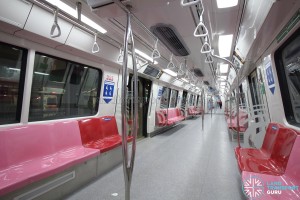
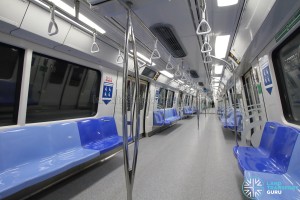
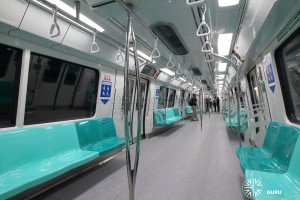
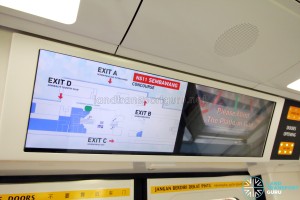

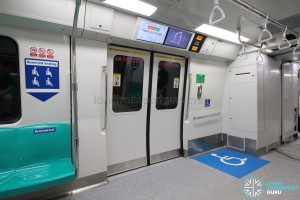
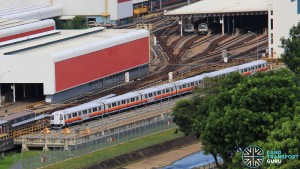
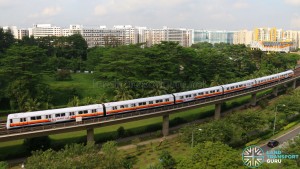

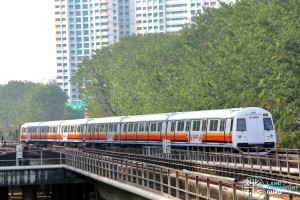
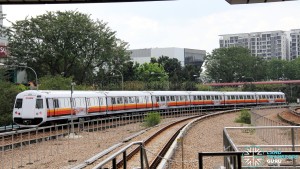
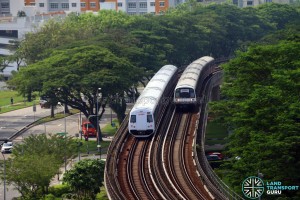
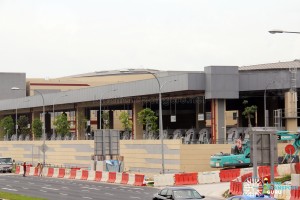
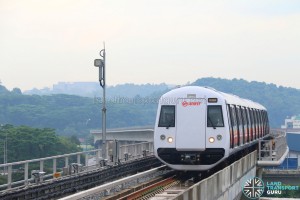
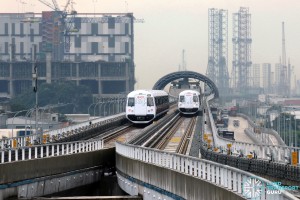
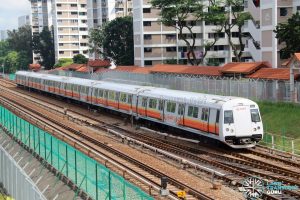
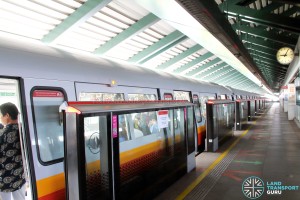
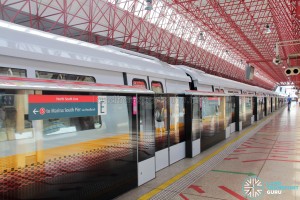
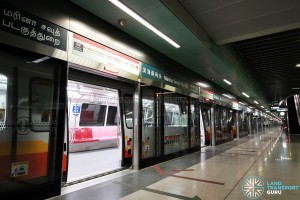
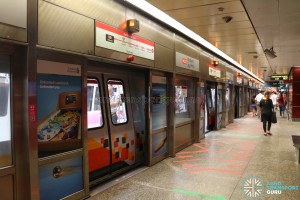
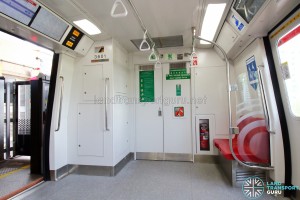
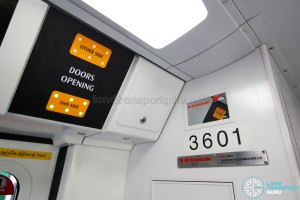


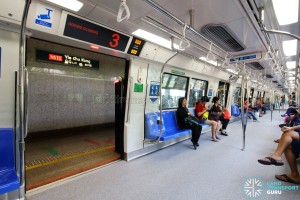
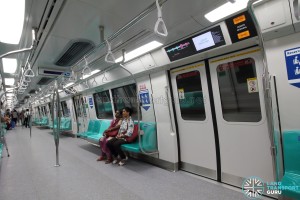
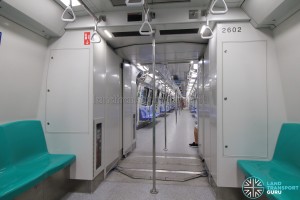


Even if I like the C151As more, I really need to date this train model. I have been dating C151As.
I love C151B, I like to take a new C151B train because that train have LCD Screen, nice SMRT livery, I Skip ALL C151A on EWL except 537/538 and 539/540, I also like to take C151C because of folderble seats, I also love the c651 because of the nice old motor, c651 will be refurbish soon, hope to get more c651 on NSL, and also I love CR151 train because it’s very nice, Hope to get more than 35 CR151s and 10 C651s running on NSL in 2021
It’s R151 not CR151, and lots of C651s are being scrapped (including the refurbished ones). There are 106 R151s. CR151 is the name of the CRL train